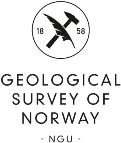
(Last updated: 22.10.2024)

|
Norsk versjon | ||||
| THE ORE DATABASE | |||||
| Occurence 1875 - 003 Tiltvika | |||||
| (Object Id: 2596) (Last updated: 22.10.2024) |
|||||
|
|
| Location |
| County: | Nordland | Municipality: | Hábmer (1875) |
| Map 1:50000: | Ulsvåg (1231-2) | Map 1:250000: | Svolvær |
| Coordinate system: | EU89-UTM Zone 33 |
| East: | 540333 m. | North: | 7565896 m. |
| Longitude: | 15.9733930 | Latitude: | 68.2037270 |
| Show on map |
|
|
| Resource |
| Resource Type: | Energy metals (U,Th) | Resource Subtype: | Uranium | |
| Element(s): | U Th Kis |
| Importance |
| Raw material meaning: | Not Assessed (reg. 18.02.2015) |
| Resources and production |
| Activity: | Exploration | Reserves: | ||
| Operating method: | Historical production: |
Mineralization |
| Genesis: | Form: | |||
| Main texture: | Min. distribution: |
| Main grain size: | Main alteration: |
| Strike/Dip: | Direction: | |||
| Plunge: |
| Stratigraphic classification of host rock |
| Era: | Period: |
| Province: | ||
| Geotec.unit: | ||
| Tectonic complex: | ||
| Igneous complex: |
| Group: | Formation: |
Information(s) in free text format |
| Free text |
| Two U-Th sulfide mineralisations occur east of Tiltvik in K-rich meta-rhyolites within a large enclave of volcanites and meta-sediments on Tysnes peninsula (UTM 33 540133E/7565346; 540333E/7565896N; Fig. 7). The mineralisations have not been described but they are very small (P. Ihlen, personal comm.). Beside these two U-Th mineralisations several small Cu- (Zn) and magnetite mineralisations were identified in epidote- and/or garnet-rich zones (Karlstrøm 1990). The Storjord magnetite mineralisation occurs in the same area and units. Airborne radiometric survey data (Håbrekke, 1979) indicate that the magnetite mineralisations are very smal |
Bibliography: |
| From NGU's Reference Archive: |
| Müller, Axel , 2010 |
| Potentials of rare earth element and Zr-, Be-, U-, Th-, (W-)mineralisations in central and northern Nordland |
| ;Norges geologiske undersøkelse;RAPPORT;NGU-rapport; No.2010.037;85 s. pages |
| Abstract: | |
| The Geological Survey of Norway (NGU) was contacted by Nordland Mineral (T. Vrålstad) in May 2010 to evaluate the potential of economic rare-earth-element (REE: Ce-Lu, Y) and Zr-mineralisations and related Be-, U-, Th-, (W-) mineralisations in Proterozoic basement windows and overlying Caledonian nappe complexes in central and northern Nordland between Mo i Rana in the south and Ofotfjorden in the north. The economic background for the study is the increasing demand for several of these elements. The general aim is to identify Zr-REE mineralisations with =2 wt.% REE(+Y) which are possibly enriched in Be, U and Th as well. Accessible literature and mineralogical, geochemical and geophysical data on REE-mineralisations and Zr-, Be-, U-, Th-, (W-) mineralisations, which might be associated with REE-mineralisations, were studied in order to indicate potential target areas for future exploration activity. The primary focus was to evaluate the potential of (1) the Høgtuva Be-REE-U-Sn mineralisation, (2) strongly fractionated granite intrusions, (3) REE-fluorite mineralisations, (4) regional REE anomalies in stream sediments and tills, (5) REE-silicates (allanite) in granites, (6) NYF pegmatites, (7) hydrothermal Fe-deposits with associated REE enrichments, (8) Th- and allanite-bearing rocks by checking regional radiometric measurements and (9) basement granites which possibly contain 2-3% REE-oxides by checking NGU databases. The results of the study indicate that mineralisations and mineralisation types named under points (1), (3), (6) and (7) are currently not of economic interest. The major outcome of the study is, that some of the more evolved Proterozoic TIB- type granites (TIB – Trans-Scandinavian Igneous Belt) of the Tysfjord basement window have a potential for sub-economic to economic Zr-REE-mineralisations. The possible carriers of the mineralisation are zircon and allanite. The identified Zr-REE-enriched TIB-2 granites are SiO2-rich, subalkaline, metaluminous A-type (anorogenic) granites with low (Na2O+K2O)/CaO ratios (<6; Figs. 37-40). They represent a specific final fractionation trend of the TIB-2 granites. These mineralisation types are relatively unknown but have been described from Saudi Arabia. Possibly exploration target areas for Zr-REE-mineralised TIB-granites are suggested. |
| Karlstrøm, Harald J. , 1990 |
| Undersøkelse av noen Cu-, Fe- og kisforekomster i Tysfjordområdet. |
| ;Norges geologiske undersøkelse;FAGRAPPORT;NGU-rapport; No.90.092;21 pages |
| Abstract: | |
| I forbindelse med regional prøvetaking av granitter i Tysfjordområdet ble det i juli/august -89 også prøvetatt en del forskjellige sulfid-mineraliseringer. De kjente skarn-mineraliseringene i området ved Storjord ble prøvetatt og analysene viste til dels høye edelmetallgehalter (gull og sølv). Sju prøver fra tippen ved Lillebotn gruve inneholdt i gjennomsnitt 3.3% Cu (0.5 - 7%), 485 ppm Ag (66-1200 ppm) og 1.2 ppm Au (0.33-3.56 ppm). De andre prøvetatte forekomstene av denne typen viste lavere verdier. Alle forekomstene er imidlertid svært små. På østsida av Tysfjord ble det prøvetatt noen magnetkismineraliseringer i grensesonen mellom kaledonske dekker og prekambriske granitter. Analysene viste lave verdier. Noen små Fe-forekomster ble også prøvetatt uten interessante resultater. |
| Håbrekke, Henrik , 1979 |
| Radiometriske og magnetiske målinger fra helikopter over Tysfjord - Hamarøy, Nordland. |
| ;Norges geologiske undersøkelse;FAGRAPPORT;NGU-rapport; No.1493;10 pages |
| Abstract: | |
| Med delvis finansiering utenfra (Kommunaldepartementets "Utbyggingsprogram for Nord-Norge" kap. 576.20) ble et område over Tysfjord og Hamarøy kommuner i Nordland dekket med radiometriske og magnetiske målinger fra heli- kopter. Området omfatter ca. 150 km2, og hovedoppgaven var å prøve om spektrometermålinger ville avdekke kaliumrike provinser innenfor Tysfjord- granittkomplekset - og om slike målinger ville avdekke nye pegmatitt- forekomster i området ved Drag eller andre steder i området. Data ble samlet både digitalt og analogt, og resultatene er presentert som profilkurvekart i målestokk 1:50.000 tegnet ut automatisk av calcompplotter. |
| The fact sheet was created on 13.12.2025 |
| Questions or comments regarding the fact sheet can be emailed to: ressursdatabaser@ngu.no |
| Copyright © 2025 Geological Survey of Norway |